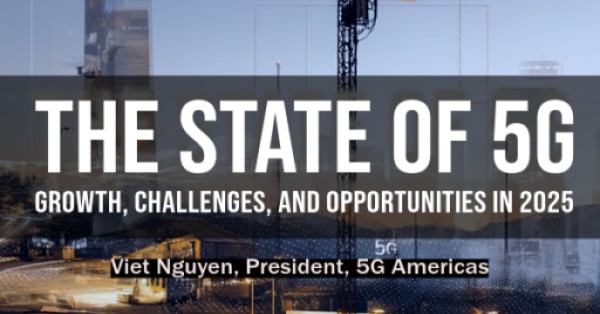OpenAI has initiated the alpha rollout of its new Advanced Voice Mode for a select group of ChatGPT Plus users, allowing them to engage in more natural conversations with the AI chatbot on the official ChatGPT mobile app for iOS and Android.
Limited Rollout to ChatGPT Plus Users
The company announced on X that the mode would be available to “a small group of ChatGPT Plus users,” adding that more users would be added on a rolling basis, with plans for all ChatGPT Plus subscribers to have access by fall. ChatGPT Plus, priced at $20 per month, provides enhanced access to OpenAI’s large language model (LLM)-powered chatbot, along with other subscription tiers like Free, Team, and Enterprise.
It remains unclear how OpenAI is selecting users for the initial access to Advanced Voice Mode. However, the company noted that “users in this alpha will receive an email with instructions and a message in their mobile app” for ChatGPT, so interested users should check their inboxes and app notifications.
Advanced Voice Mode Features
The Advanced Voice Mode, showcased at OpenAI’s Spring Update event in May 2024, enables real-time conversation with four AI-generated voices on ChatGPT. The chatbot can handle interruptions and detect, respond to, and convey different emotions in its utterances and intonations.
OpenAI demonstrated various potential use cases for this conversational feature, including acting as a tutoring aid, fashion adviser, and guide for the visually impaired, especially when combined with its Vision capabilities.
System Requirements and Usage
Advanced Voice Mode is currently available on the iOS and Android ChatGPT apps. To use this feature, Android users need app version 1.2024.206 or later, and iOS users need app version 1.2024.205 or later with iOS 16.4 or later.
To start a conversation, users should select the Voice icon at the bottom-right of the screen. During the conversation, users can mute or unmute the microphone by selecting the microphone icon at the bottom-left of the screen and end the conversation by pressing the red icon at the bottom-right. Users need to provide the ChatGPT app with microphone permission to use this feature.
Usage Limits and Current Constraints
Advanced Voice Mode is currently in a limited alpha and may make mistakes. Usage of advanced Voice Mode (audio inputs and outputs) is limited daily, with precise limits subject to change. The ChatGPT app will issue a warning when three minutes of audio usage remain. Once the limit is reached, the conversation will end, and users will be invited to switch to the standard voice mode.
Advanced Voice Mode cannot create or access previous memories or custom instructions. Conversations in this mode can be resumed in advanced Voice, text, or standard Voice. However, due to the lack of memory and custom instruction support, conversations in text or standard Voice cannot be resumed in advanced Voice Mode.
How to Minimize Conversation Interruptions
To minimize interruptions during conversations in advanced Voice Mode, OpenAI recommends using headphones. iPhone users can enable Voice Isolation mic mode by opening the Control Panel, selecting Mic Mode, and switching to Voice Isolation. If issues persist, restarting the app, increasing the assistant’s volume, or moving to a quieter environment may help. The feature is not optimized for use with in-car Bluetooth or speakerphone.
Data Usage and Privacy Considerations
During the alpha phase, audio from advanced Voice Mode conversations will be used to train OpenAI’s models if users have shared their audio. Users can opt out by disabling “Improve voice for everyone” in their Data Controls Settings. If this setting is not visible, it means the user hasn’t shared their audio, and it will not be used for training.
With Standard Voice Mode, if users share their audio, OpenAI will store audio from voice chats rather than deleting clips after transcription. Efforts will be made to reduce personal information in the audio used for training, and the team may review shared audio.
No Support for GPTs, Music, and Video
Advanced Voice Mode is not yet available for use with GPTs and cannot generate musical content due to protections for creators’ rights. Video and screen-sharing support are also not part of the current alpha but will be available in future updates.
How Advanced Voice Mode Stands Out
The release of ChatGPT Advanced Voice Mode differentiates OpenAI from competitors such as Meta’s new Llama model and Anthropic’s Claude, and pressures emotive voice-focused AI startups like Hume. In recent months, OpenAI has released numerous papers on safety and AI model alignment, following the disbanding of its superalignment team and criticisms from former and current employees about prioritizing new products over safety.
Future Availability
OpenAI plans for all ChatGPT Plus users to have access to Advanced Voice Mode by fall, contingent on meeting safety and reliability standards. The company is also working on rolling out the new video and screen-sharing capabilities, which are demoed separately, and will keep users updated on the timeline.
Clearly, the cautious rollout of Advanced Voice Mode aims to address these criticisms and reassure users, regulators, and lawmakers that OpenAI is committed to prioritizing safety alongside innovation and profitability.






















